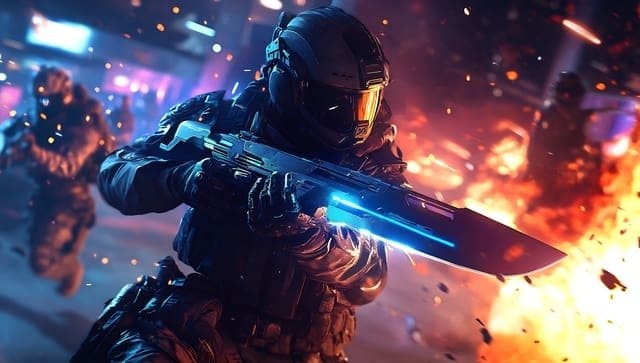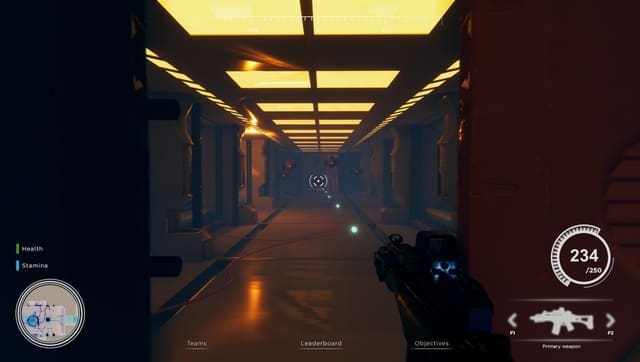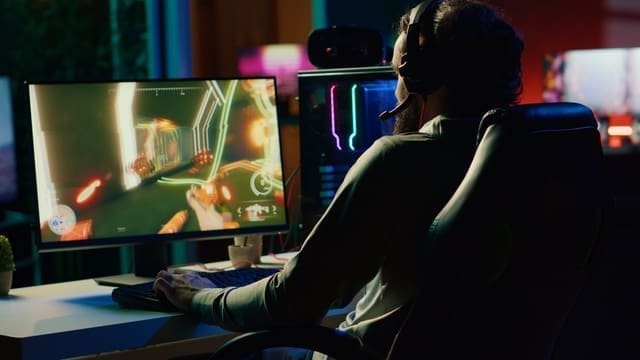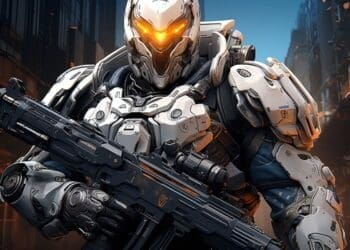The gaming community can’t seem to agree whether Overwatch belongs in the MOBA or hero shooter category. The debate rages on as these gaming genres continue to overlap.
Marvel Rivals has just entered the scene and reignited this discussion. This new 6v6 team-based PVP hero shooter, created by NetEase Games and Marvel Games, caught everyone’s attention when it pulled in nearly 500,000 Steam players right after launch. Players can choose iconic characters like Black Panther, Spider-Man, and Magneto. The game draws obvious parallels to Overwatch while carving out its own unique identity.
These comparisons make sense. Hero shooters typically skip traditional MOBA elements like item building and in-match leveling. Both genres share core team-based mechanics that blur the lines for games like Overwatch. This piece dives deep into what sets these gaming categories apart and examines why Overwatch sits between both worlds. Games like Marvel Rivals only add more complexity to this ongoing genre debate.
What defines a MOBA vs. a Hero Shooter?

The difference between MOBAs and hero shooters shows in their basic design approach. They share enough common elements that gamers often get confused about what’s what.
Key features of a MOBA
Multiplayer Online Battle Arenas (MOBAs) started as mods for real-time strategy games and grew into something new. Players see the action from above in these games, either through a top-down or isometric view. Most MOBAs put two teams of five against each other. Each player controls one character with special abilities.
These games stand out because they have:
- One primary map with three lanes connecting two opposing bases
- AI-controlled minions that march along lanes toward enemy structures
- Towers or defensive structures protecting each base
- A leveling system where characters grow stronger throughout the match
- Item purchasing/building that improves character abilities
- A jungle area with neutral monsters providing bonuses
Players need to think more about strategy than quick reflexes in MOBAs. Games usually last 30-45 minutes, which lets teams develop complex plans. League of Legends, Dota 2, and Heroes of the Storm are the biggest names in this genre.
Core traits of a hero shooter
Hero shooters mix shooting with character-specific abilities. These games don’t use generic soldier types like traditional class-based shooters do. Instead, each character is unique.
Players see the action from first or third-person views in hero shooters. Teams work together toward objectives without leveling up or buying items during matches. Your character stays the same from start to finish, though ultimate abilities charge up as you play.
The games also tell stories about their characters. Each hero has a backstory and personality that makes the experience more engaging than regular shooters with basic classes.
Where the genres overlap
People wonder if Overwatch is a MOBA because these genres share some features. Both types of games have unique heroes with special abilities and ultimates. Teams need to pick the right mix of characters and roles in both genres.
Hero shooters borrowed MOBA’s idea of making characters easy to recognize by their looks and abilities. Jeff Kaplan, Overwatch’s former game director, said “the heroes are the content of the game.”
Games like Overwatch mix elements from both worlds. They take ideas from MOBAs but skip the lane-based gameplay. This creates something new that’s hard to put in just one category.
How Overwatch fits into both categories

Image Source: MMOs.com
Overwatch blends MOBA and traditional first-person shooter elements to create something unique. Players and critics still debate how to categorize this game that breaks conventional gaming boundaries.
Overwatch’s hero-based design
The game’s foundation lies in its hero-centric approach like MOBAs. When it launched with 21 unique characters in 2016, each brought distinctive abilities and playstyles beyond basic gunplay. Character selection drives strategic decisions, unlike traditional shooters where weapons define the gameplay.
Heroes like Reinhardt, Winston, and Symmetra show that players don’t always need perfect aim to succeed. These characters rely on smart positioning, timing, and ability management—traits you’d typically see in MOBAs rather than shooters. This variety lets players with different skills make valuable team contributions.
Yes, it is clear that Blizzard crafted each hero with “meticulous purpose, right down to the way they dress, talk, and move”. Players can spot these distinct character silhouettes quickly in battle—a design approach straight from the MOBA playbook.
Lack of item building and leveling
Overwatch takes inspiration from MOBAs but skips some classic elements. The game lacks an in-match progression system where characters level up or buy items during matches. Players earn experience across their entire account instead of individual heroes. This system focuses on cosmetic rewards rather than gameplay mechanics.
Overwatch uses a streamlined “ultimate charging” system instead of traditional MOBA advancement. Players build ultimate charge through good performance, which works like a simplified version of MOBA progression while keeping shooter gameplay fast and fluid.
Without item building and in-match leveling, matches stay focused on skill expression rather than the economic decisions that shape MOBA gameplay.
Team-based objectives and roles
Teams in Overwatch follow MOBA-style role-based composition rules. The standard format needs one Tank, two Damage, and two Support heroes. Each role comes with specific passive abilities and responsibilities. Tanks create space and soak damage, Supports heal and provide utility, while Damage heroes secure kills.
Teams usually pick strategies like Dive, Brawl, or Poke. These need MOBA-like coordination for team fights. The game emphasizes objective-based play through capture points and payload escorting instead of traditional shooter deathmatches.
Overwatch players must combine MOBA-style team strategy with shooter mechanical skills to win. This unique mix explains why the game still defies simple labels and why people keep asking “Is Overwatch a MOBA?” years after release.
The evolution of hero shooters from MOBAs

MOBA and shooter elements took years to blend together. This mix created what we now call hero shooters through years of gaming development.
Early MOBAs and their influence
MOBAs started with a simple StarCraft custom map. Eon of Strife, created in 1998, laid the groundwork. Players controlled one hero unit and fought computer-controlled units across three lanes. A Warcraft III modder named Eul took this concept further. He created Defense of the Ancients (DotA) in 2003, which let five players battle against another team of five.
Steve “Guinsoo” Feak created DotA Allstars by taking the best parts from different DotA versions. His work shaped the MOBA formula that would shape games beyond its category. DotA Allstars made its official debut at BlizzCon in 2005. Competitive tournaments soon spread worldwide.
The rise of class-based shooters
Class-based shooters developed their own style during this time. Battlefield 1942 and Team Fortress Classic brought specific roles for players. Each role came with unique abilities and special weapons that other classes couldn’t use. These games built the foundation that hero shooters would later use.
Team Fortress 2 directly inspired games like Overwatch. Overwatch’s game director Jeff Kaplan said it clearly: “Team Fortress 2 was a huge influence on Overwatch.”
Overwatch’s role in shaping the genre
Overwatch became the ultimate team-based shooter. Many players call it the perfect hero shooter experience. Blizzard started with a class-based approach but switched to specialized heroes—a design choice straight from MOBAs.
Overwatch grew from Blizzard’s canceled project Titan. It used many character classes originally made for Titan. Blizzard carefully mixed elements from MOBAs and team-based shooters. This created something new that focused on “hero gameplay” above everything else.
This new style became a template. Games like Marvel Rivals and Paladins followed suit, making the line between these gaming categories even thinner.
How Marvel Rivals and others add to the confusion

Image Source: GamesRadar
The rise of hero-based games has made the “is Overwatch a MOBA” debate trickier. New games keep borrowing elements from multiple genres. Traditional game categories don’t have clear boundaries anymore.
Marvel Rivals as a case study
Marvel Rivals shows us how genres blend together. This free-to-play hero shooter launched in December 2024 and grabbed 40 million players by February 2025. The game’s core features 6v6 team-based combat where heroes fit three roles: Vanguard, Duelist, and Strategist. The sort of thing I love is how it mixes MOBA and hero shooter elements.
The game’s “Team-Up” mechanic pairs specific characters to combine their abilities—picture Hulk throwing Wolverine at enemies in a “Fastball Special”. This team synergy feels like it came from MOBAs, but the destructible environments and third-person shooting keep it firmly in shooter territory.
Players who know Overwatch will spot the similarities right away. One analysis states, “Every Marvel Rival hero can be viewed as an amalgamation of two or more Overwatch heroes“. Some characters, like Star-Lord, copy Tracer’s abilities so much they “almost feel like a reskin”.
Comparisons with Paladins and Valorant
Paladins and Valorant also blur these genre lines. Paladins lets players customize their heroes before matches—something you won’t find in Overwatch or Marvel Rivals. These choices lock in once made, which makes “the character selection phase half the battle”.
Valorant takes Counter-Strike’s bomb-planting mechanics and adds hero-based abilities that remind us of Overwatch. Riot Games, the team behind League of Legends, created Valorant. This shows how MOBA developers expand into shooter territory.
Why genre lines are blurring in modern games
We see this blurring because developers know that “applying the label [of a genre] inhibits both the game’s development and the audience’s appreciation”. Labels like “RPG, RTS, FPS, MMO” just limit creative possibilities.
So modern games borrow winning elements from different genres. Games grow more complex and offer “newer options and an expanded idea of what constitutes a game”.
This progress brings us games like Predecessor, which calls itself a “shooter-MOBA hybrid”. It uses third-person shooter mechanics but keeps MOBA-style strategy. These games don’t fit simple categories and reward “teamwork and strategy in a way many shooters overlook”.
Conclusion
The line between MOBAs and hero shooters gets fuzzy when you look at Overwatch. It’s hard to put this game in just one box. The game takes key elements from MOBAs – unique heroes with special abilities, team roles, and the need for smart team builds. But it stays true to shooter basics with its first-person view and fast-paced action gameplay.
This mix of genres shows how games naturally grow and change rather than stick to old rules. Look at games like Overwatch, Marvel Rivals, and Valorant – they prove that developers now care more about making fun games than following strict genre rules.
Players and critics might keep arguing about whether Overwatch is “truly” a MOBA or a hero shooter. But they’re missing what makes it special. Blizzard created something that goes beyond labels – a game that pulls in both MOBA strategists and shooter fans. That’s where its brilliance shines.
As gaming moves forward, more titles will mix different genre elements. Rather than trying to force games into old boxes, we should welcome these hybrid games that bring fresh ways to play. Marvel Rivals builds on Overwatch’s foundation and adds its own twist, showing how this genre-mixing approach still works great.
These classification debates show how much gamers care about their favorite games. You might call Overwatch a MOBA, a hero shooter, or something completely new – but the discussions it gets more and thus encourages more prove how much it changed gaming culture.
FAQs
Q1. Is Overwatch considered a MOBA or a hero shooter?
Overwatch is primarily classified as a hero shooter. While it incorporates some MOBA-like elements such as unique heroes with abilities, it lacks traditional MOBA features like lane-pushing and in-match character progression. The game focuses on first-person shooter gameplay with objective-based team combat.
Q2. What are the key differences between Overwatch and traditional MOBAs?
The main differences are the first-person perspective, lack of creeps and towers, absence of in-match leveling, and focus on shooter mechanics. Overwatch emphasizes moment-to-moment gunplay and team objectives rather than lane control and economy management typical in MOBAs.
Q3. How does Overwatch’s hero system compare to class-based shooters?
Overwatch’s hero system is more specialized than traditional class-based shooters. Each hero has unique abilities and an ultimate, similar to MOBA characters. However, unlike MOBAs, players can switch heroes mid-match to adapt to the situation, blending elements of both genres.
Q4. What impact has Overwatch had on the evolution of hero shooters?
Overwatch has significantly influenced the hero shooter genre by popularizing the combination of FPS mechanics with MOBA-like hero abilities. It has inspired other games to adopt similar models, blurring the lines between traditional shooter classes and more diverse, ability-focused character designs.
Q5. How does Overwatch’s gameplay differ from games like Marvel Rivals?
While both games feature hero-based combat, Overwatch focuses more on traditional FPS objectives like payload escorting and point capture. Marvel Rivals incorporates more MOBA-inspired elements, such as character synergies and third-person perspective, creating a slightly different gameplay experience despite both being in the hero shooter category.




















































